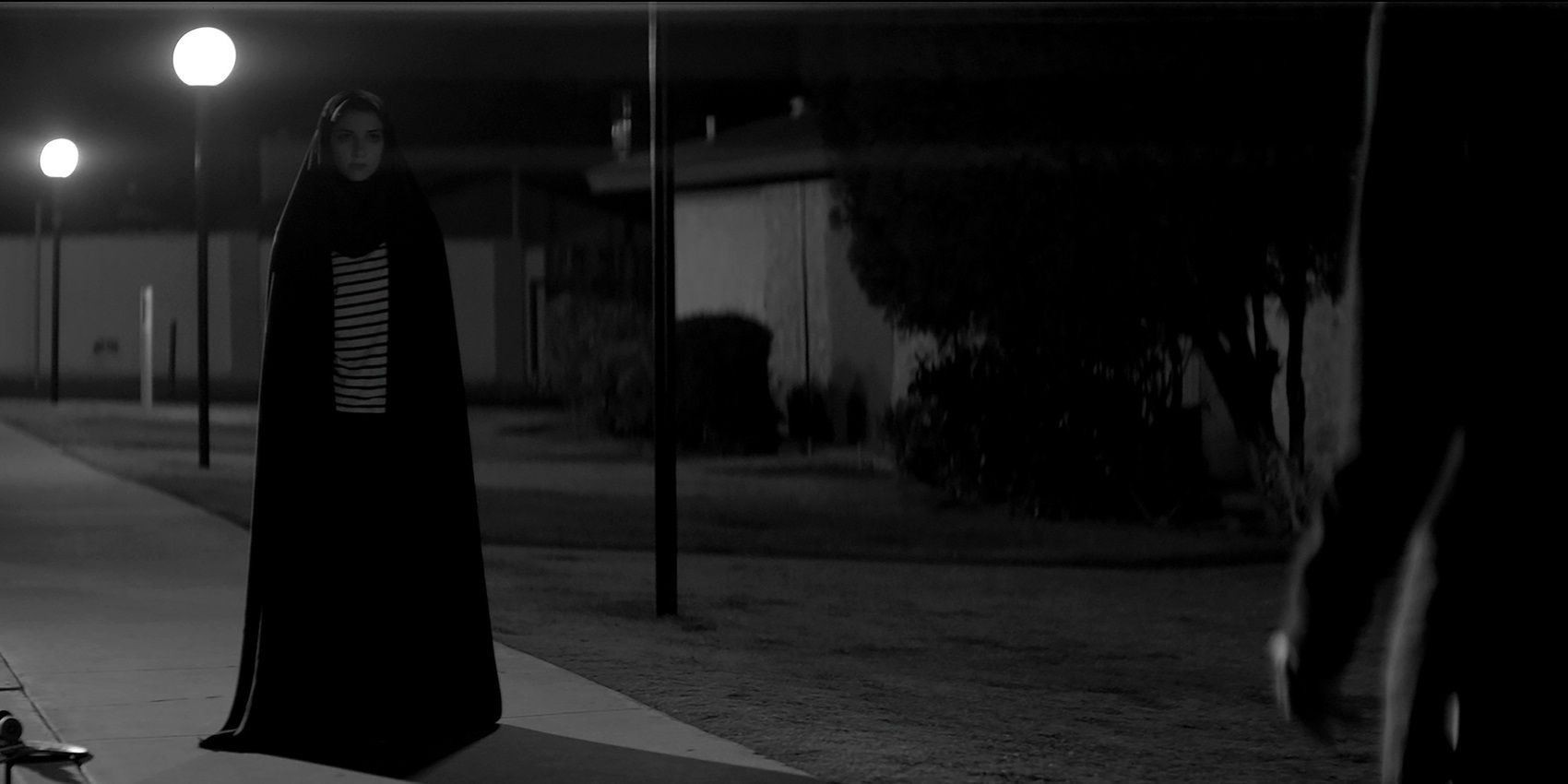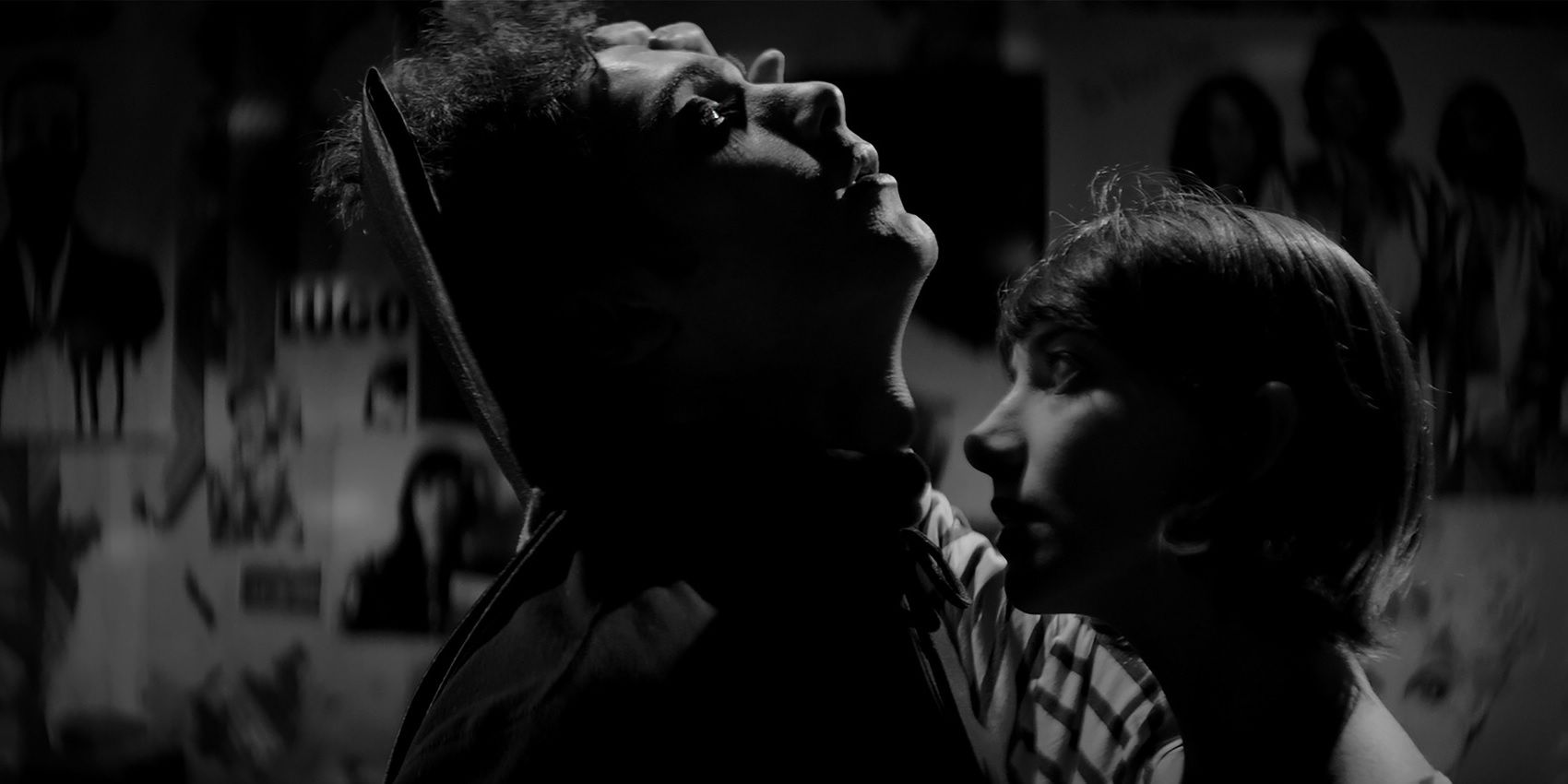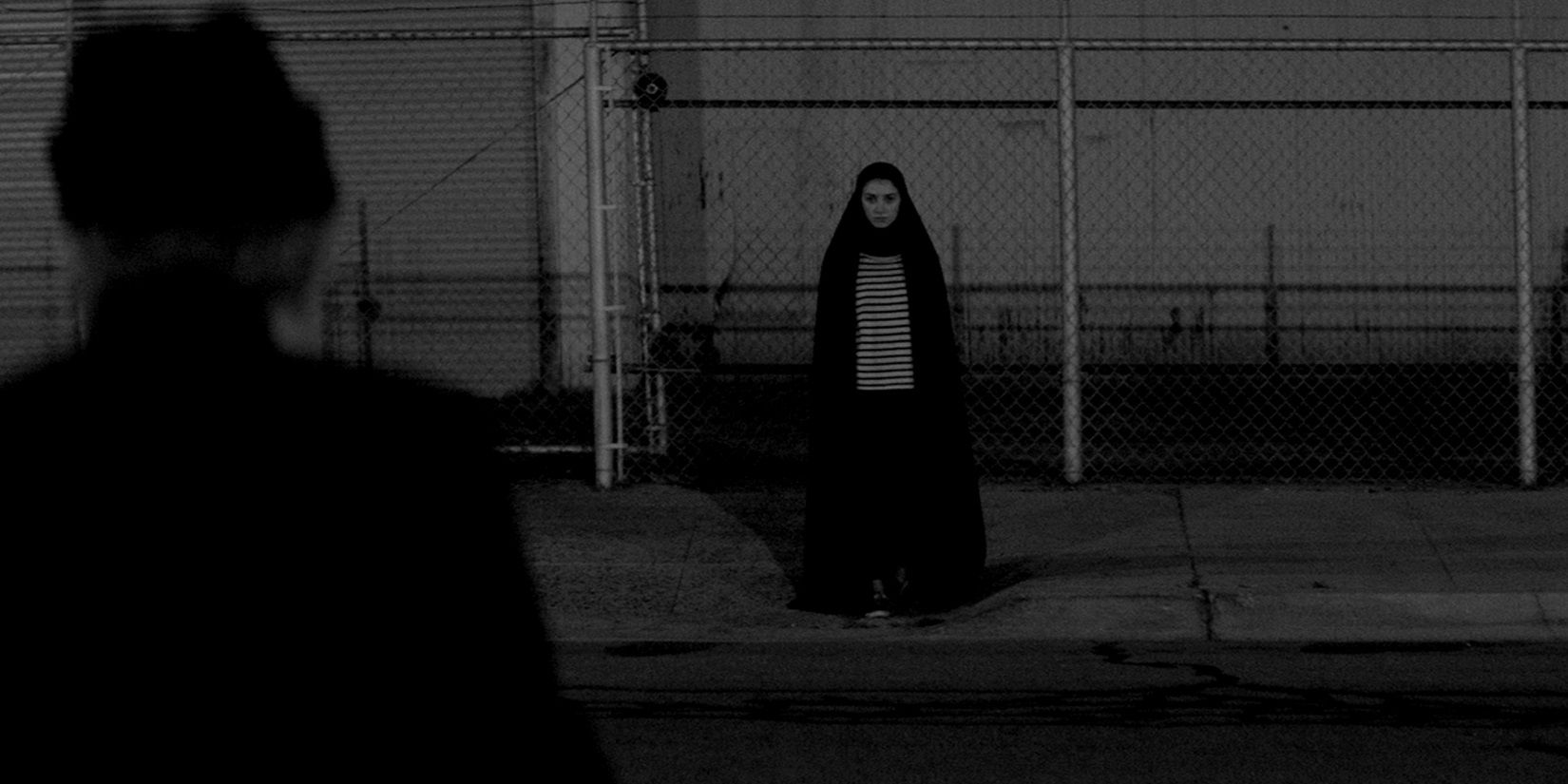In recent years, the term “elevated horror” has been coined by critics who feel insecure about giving a positive review to a scary movie. After horror cinema devolved into “torture porn” throughout the 2000s, movies like The Witch and It Comes at Night have taken the genre back to basics with low-key production value and character-driven storytelling. Auteurs like Jordan Peele, Ari Aster, and Robert Eggers have revitalized cinematic horror with fiercely original stories and sharp social commentary, and as a result, horror fans are currently enjoying a wave of spooky, suspenseful masterpieces including some of the genre’s all-time greatest entries.
While plenty of praise has been rightly directed at Peele, Aster, and Eggers, one filmmaker that deserves to be included under this banner but often slips under the radar is Ana Lily Amirpour. Amirpour’s 2014 directorial debut A Girl Walks Home Alone at Night, described in its marketing as “the first Iranian vampire western,” is one of the most unique and original horror movies in recent memory, and a must-see gem for fans of the genre. It has a subversive take on vampire lore that flips the female victim trope on its head, as well as effective scares, stylish black-and-white visuals, and an awesome soundtrack.
Set in the fictional dystopian crime-ridden ghost-town of Bad City, A Girl Walks Home Alone at Night stars Sheila Vand as “The Girl,” a vampire who spends her nights prowling the streets, looking for despicable men to drain the blood from. Traditionally, vampire fiction paints its female characters as victims, either as the object of a vampire’s desire or their “familiar.” In A Girl Walks Home Alone at Night, The Girl’s vampirism allows her to feel safe, giving her much more agency than horror stories usually allow their female protagonists.
Unsurprisingly, A Girl Walks Home Alone at Night has been praised as a highlight of feminist cinema. Amirpour positions The Girl as a sort of antihero. She spends her nights sucking people’s blood and leaving them for dead, but she mostly targets reprehensible, abusive men. While horror movies from Rosemary’s Baby to The Texas Chain Saw Massacre have focused on women being tortured and terrorized by men, A Girl Walks Home Alone at Night offers the exact opposite.
There’s a surprisingly sweet love story that perfectly balances the horror, western, and dystopian elements. After the movie establishes The Girl’s violent hobbies, it introduces her to a romantic interest: Arash, played by Arash Marandi. The idea of a vampire romance might have Twilight alarm bells ringing, but unlike Stephenie Meyer’s lukewarm Y.A. fantasy, Amirpour’s movie avoids tired clichés at every turn and explores the dark implications of romance with the bloodsucking undead. The moment that The Girl falls for Arash is expressed when his neck is exposed and she resists biting it and instead nestles into his chest.
Vand brings an unsettling calmness to The Girl’s demeanor as she builds up to a kill. When her fangs come out and she sinks them into somebody’s neck, they scream in terror. But for her, it’s like tying her shoelaces or brushing her teeth – she’s been doing it so often for so long that it no longer has any impact. After she’s introduced as a bloodthirsty monster, The Girl’s blossoming love for Arash humanizes her.
Amirpour and cinematographer Lyle Vincent chose to shoot the movie in black-and-white. This bleaker palette brought out the bleakness of Bad City, making images like a pile of bodies building up under a bridge even more unnerving than they would be in color. Since the majority of the movie takes place at night, the gorgeous high-contrast monochromatic visuals are used to juxtapose the creepy foreground action against the pitch-black of the night sky.
The movie’s soundtrack is one of its greatest assets. Mixing in a wide variety of musical styles, Amirpour creates the perfect mood for each scene with well-placed musical accompaniment. In addition to the foreboding original score provided by Bei Ru, Amirpour included licensed tracks by such disparate artists as Kiosk, Dariush, and White Lies. The latter’s post-punk hit “Death” beautifully underscores the first intimate moment between The Girl and Arash. Every time The Girl gets her fangs out and targets somebody, there’s a disturbing, almost David Lynchian ambiance on the soundtrack.
Tonally, A Girl Walks Home Alone at Night pays homage to plenty of classic vampire films – namely the groundbreaking 1922 masterpiece Nosferatu – but it’s far more than just a vampire movie. With its lone antihero, lawless setting, and the music of Federale evoking Ennio Morricone on the soundtrack, it’s as much of a spaghetti western as a horror movie. There’s nothing quite like it. While most movies fit neatly into a familiar category, A Girl Walks Home Alone at Night proudly sits in its own category: the vampire spaghetti western vigilante thriller romance. For vampire fans who got disillusioned by the post-Twilight rut the genre found itself in, A Girl Walks Home Alone at Night is essential viewing.



